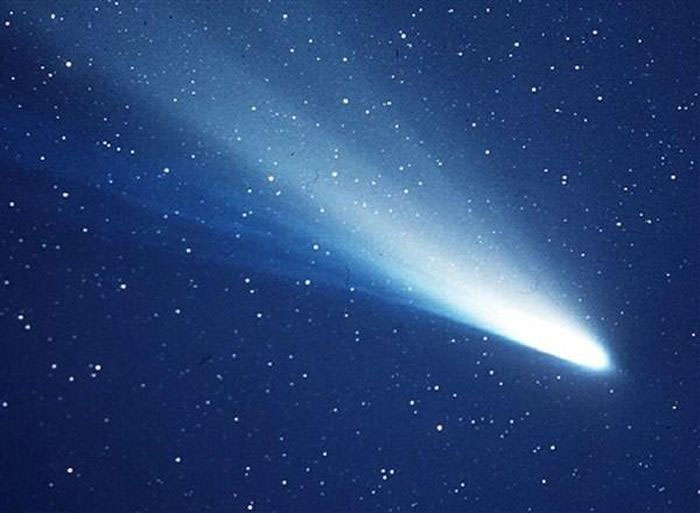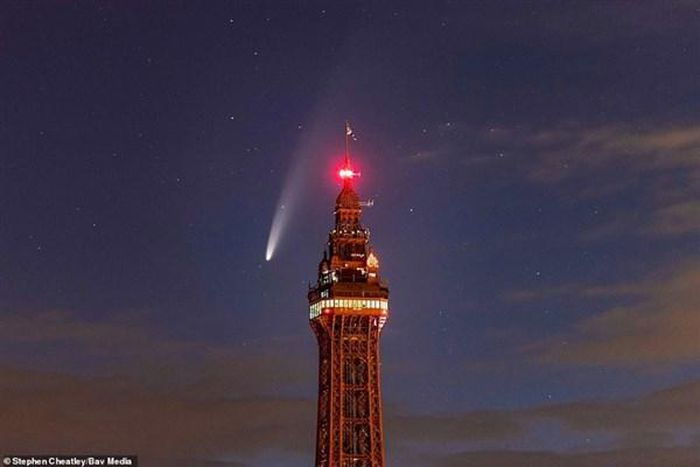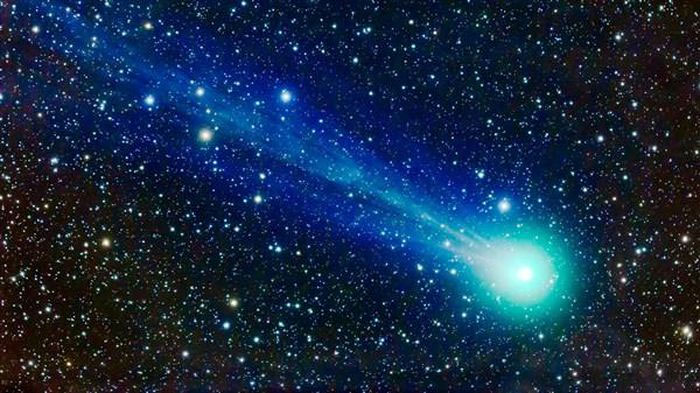Comets are celestial bodies that orbit the Sun. Large comets can be observed when they come close enough to Earth without the need for optical devices. Ancient civilizations were often terrified by this astronomical phenomenon.
Initial Concepts of Comets
Comets have long been a nightmare, a source of fear across various cultures around the world. In ancient cultures, comets were seen as ominous signs from the gods.
The appearance of a comet was heralded as a signal for death, disease, and disaster. Notably, there were coincidences that heightened the fear surrounding this phenomenon. For example, in 1664, a very bright comet appeared in the sky.
This coincided with the time when the city of London (England) suffered from a plague outbreak in 1665 that resulted in over 100,000 deaths. Following this was the Great Fire of London in 1666, which nearly destroyed the entire city.
So where did the fear of this phenomenon originate in ancient civilizations? Observing the night sky, people noticed that comets were unlike any other celestial bodies. While other celestial objects could have their cycles predicted with accuracy, comets always seemed unpredictable.
This led ancient civilizations to believe that the gods dictated the movements of comets and sent messages to humanity through them.

Comets have long been a nightmare, a source of fear across various cultures. (Illustrative image).
First Observations
The earliest observations of comets were meticulously recorded by the Chinese. The oldest records date back to around 1000 BC. Among these, the first observations of Halley’s Comet in 239 BC were documented by Shih Chi and Wen Hsien Thung Khao.
Ideas about the nature of comets emerged with the development of Greek natural philosophy around 550 BC. At that time, the Pythagorean school considered comets to be planets that regularly appeared on the horizon during the morning or evening.
Meanwhile, Aristotle posited that comets were celestial bodies traveling in orbits lower than that of the Moon. Aristotle’s view of comets was accepted for a long time.
The first astronomer to make detailed observations and studies of comets was Edmond Halley. He regarded it as a fascinating phenomenon. Halley made very detailed observations of a comet that appeared in 1680. While examining old records of comets, he noticed that the comets appearing in 1531, 1607, and 1682 shared many similarities. He asserted that these three comets were one and the same.
Edmond Halley accurately calculated the return of this comet in 1758. Although he did not live to see its return, the confirmation of this prediction marked the beginning of future observations and studies of comet characteristics. This comet was named after him, and to this day, Halley’s Comet is considered the most famous comet.

Comet 45P emits a mystical glow in the sky.
Origins and Physical Characteristics
Comets are classified into two types based on their orbital characteristics: short-period comets and long-period comets. Short-period comets originate from the Kuiper Belt, which lies beyond the orbit of Neptune.
Long-period comets are believed to originate from the Oort Cloud—a spherical region surrounding the outer boundary of the Solar System, composed mainly of icy objects with a diameter of about 2 light-years.
Long-period comets from the Oort Cloud are pushed toward the Sun on parabolic or hyperbolic orbits due to gravitational disturbances from stars with orbits near the Solar System and the gravitational fluctuations of the galaxy.
The nucleus of a comet is a solid mass ranging from a few kilometers to several tens of kilometers in size. Its primary components are rock, dust, gas, and frozen water, with approximately 80% being frozen water, around 15% carbon monoxide (CO), and the remainder consisting of carbon dioxide (CO2), methane (CH4), and ammonia (NH3).
Deep within the nucleus, there is a small component of organic compounds such as methanol, hydrogen cyanide, formaldehyde, ethanol, ethane, and possibly more complex molecules like amino acids.
The outer layer is a gas envelope surrounding the nucleus. It only appears when the comet comes close enough for solar radiation to cause sublimation at the nucleus. At this point, a layer of gas is released from the icy layer at the center of the comet. The size of the envelope increases as it approaches the Sun and can become as large as the diameter of Jupiter, despite having a very low density.
In December 2017, a solar flare caused the head of comet 17P/Holmes to exceed the size of the Sun. Although large, it diminished as it passed through the orbit of Mars, as at this distance, the solar wind was strong enough to blow the gas and dust layer into a bright tail.
The tail of a comet is a characteristic feature of the celestial body as observed from Earth. It is a stream of gas resulting from the sublimation of the comet’s nucleus components, blown in one direction by the pressure of the solar wind. The division of the gas stream by the solar wind causes comet tails to vary and are generally categorized into single-tail, double-tail, and triple-tail comets…
Contrary to common assumptions, the tail of a comet does not point in the direction of its motion like a jet stream but instead points away from the Sun, regardless of the comet’s trajectory, due to the pressure exerted by the solar wind.

Comet Neowise in the sky over England. Photo taken in July 2020.
Life Cycle
Each comet has a different life cycle starting from the moment it begins to move into the Solar System. Comets originate from very distant places from the Sun, so when at aphelion, they are very cold. At this point, gas and water molecules are frozen. At the starting point, they cannot be observed due to their small size and great distance.
Comets begin to be observed when they come close enough to the Sun and start to glow due to the sublimation of materials on their surface. Under the influence of solar radiation, the ice on the comet’s surface does not melt but transforms directly from ice to gas. As sublimation occurs, water molecules are separated through photodissociation (the breakdown of a chemical compound due to the impact of photons).
Among all observed comets, only about 10% survive after 50 perihelion passages, and only 1% survive through 2,000 passages. The lucky comets escape the high pressure from the Sun and continue to repeat their orbital cycles.
However, some are not so fortunate. Some will collide with the Sun or be shattered by the Sun’s pressure. Additionally, others may collide with planets, such as comet Shoemaker-Levy 9, which collided with Jupiter in 1994.
The cause of meteor showers: As comets approach the Sun, the pressure from the Sun and gravitational interactions cause the rocky surface of the comet to break apart. At this point, fragments are ejected, leaving behind many small pieces along its path—these are meteoroids.
Since most comets travel along the ecliptic plane, when they cross Earth’s orbit, they leave behind trails of meteoroids due to Earth’s gravitational influence, which is the reason for meteor showers.
Comets bring life to Earth: As mentioned, organic compounds—the essential building blocks of life—are present in the nuclei of comets. During the early formation stage, numerous comets and asteroids collided with Earth.
Scientists believe that the impacts with Earth around 4 billion years ago delivered a significant amount of water to our planet.
The discovery of organic molecules such as Polycyclic Aromatic Hydrocarbons (PAHs) in large quantities in comets has led some to suggest that comets or meteoroids brought these primordial organic molecules to Earth. It is from these initial compounds that life on our planet has formed and evolved to this day.
| Only bright comets with a perihelion very close to the Sun can be observed with the naked eye. Although the speed of these celestial bodies in orbit is quite high, from Earth’s perspective, comets appear to move very slowly.
In fact, in many cases, it is difficult to notice positional changes against the night sky. This is different from the common misconception that comets streak across the sky like meteors. With a good amateur telescope or binoculars, we can observe comets when they come relatively close to the Sun. |




















































